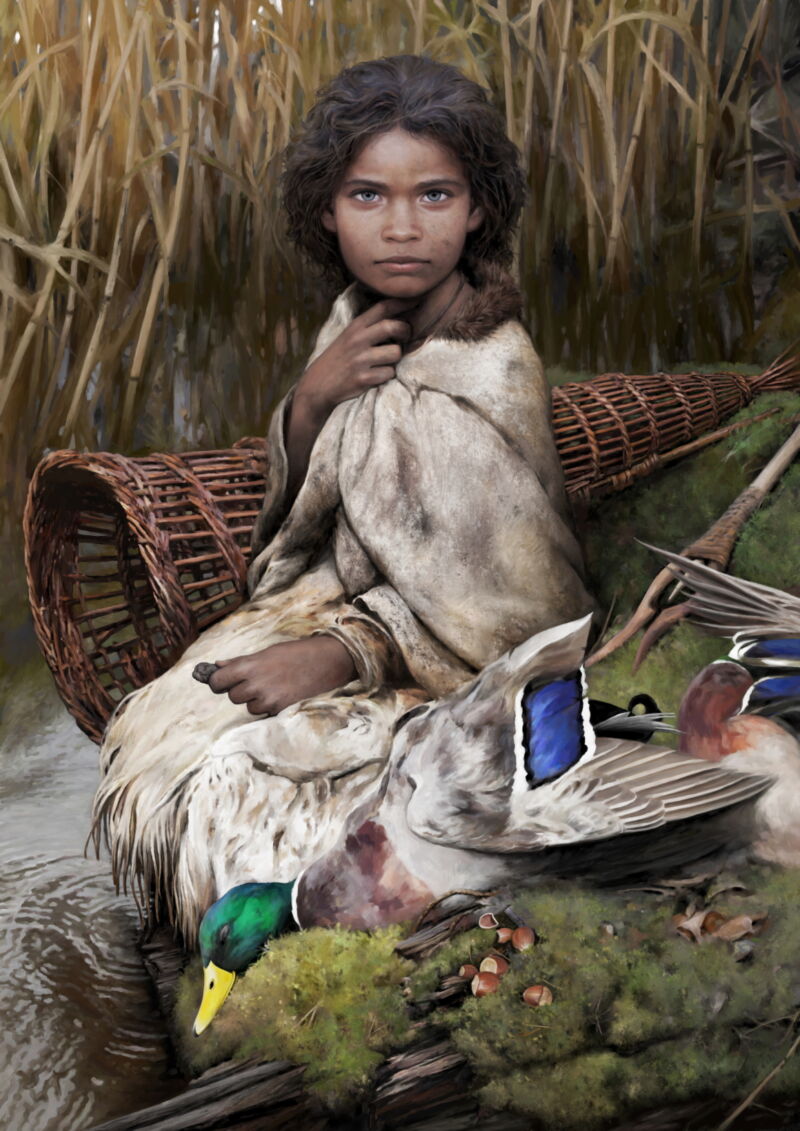Ancient “chewing gum” contains a 5,700-year-old genome

Enlarge / This artist's reconstruction shows "Lola" as a young girl, with items that likely would have been part of her daily life, but we have no way of knowing how old she was when she chewed and discarded the lump of birch-bark pitch. (credit: Tom Bjirklund)
5,700 years ago, a woman in what is now Denmark chewed a lump of birch-bark pitch for a while and then dropped it. Millennia later, the DNA she left behind reveals her entire genome, a census of the bacteria living in her mouth, and a few hints about a recent meal.
Meet "Lola"If you're a hunter-gatherer who needs to haft a stone tool, birch-bark pitch makes a handy adhesive, but you might have to chew it to make it pliable enough to work with. Pitch is watertight and contains an antiseptic compound called betulin, so it's great at preserving DNA. In fact, archaeologists in Scandinavia have found more human DNA in bits of chewed pitch than they have in skeletons (which have been relatively rare at prehistoric Scandinavian sites we've studied thus far).
But this is the first time researchers have managed to sequence an ancient person's whole genome from a lump of chewed pitch. Only about a third of the DNA bioarchaeologist Hannes Schroeder, of the University of Copenhagen, sampled was human; the other 68 percent came from the ancient woman's microbiome and traces of a prehistoric meal. This single discarded piece of ancient chewing gum tells us that the ancient woman, who Schroeder and his colleagues have nicknamed Lola, was probably lactose intolerant, ate duck and hazelnuts, and may recently have had pneumonia. She also had blue eyes, dark brown hair, and dark skin.
Read 14 remaining paragraphs | Comments